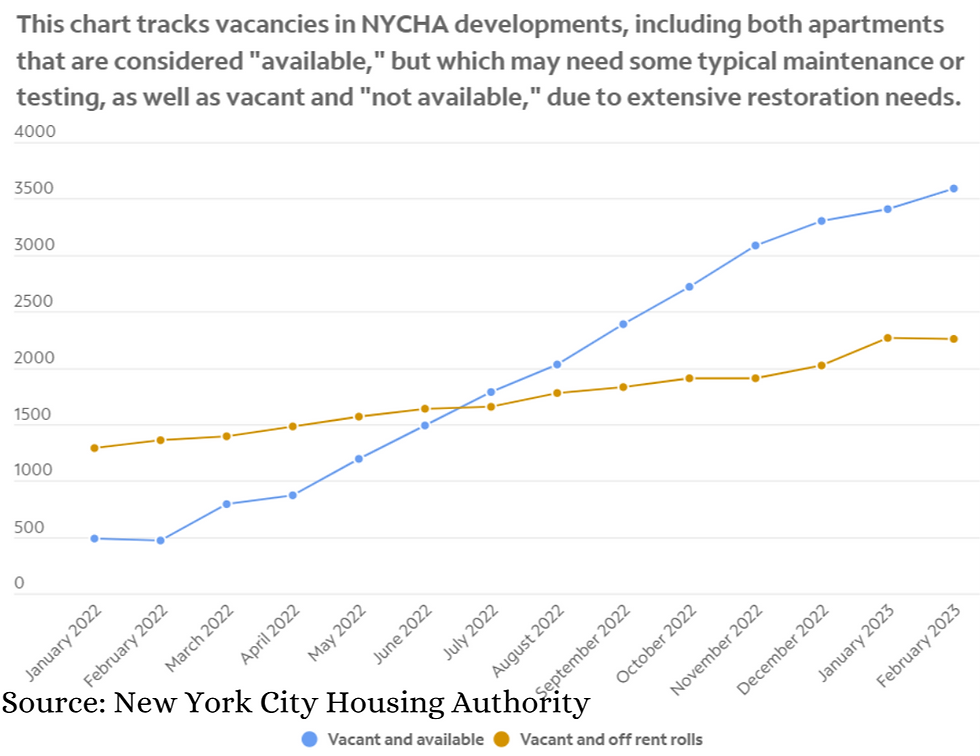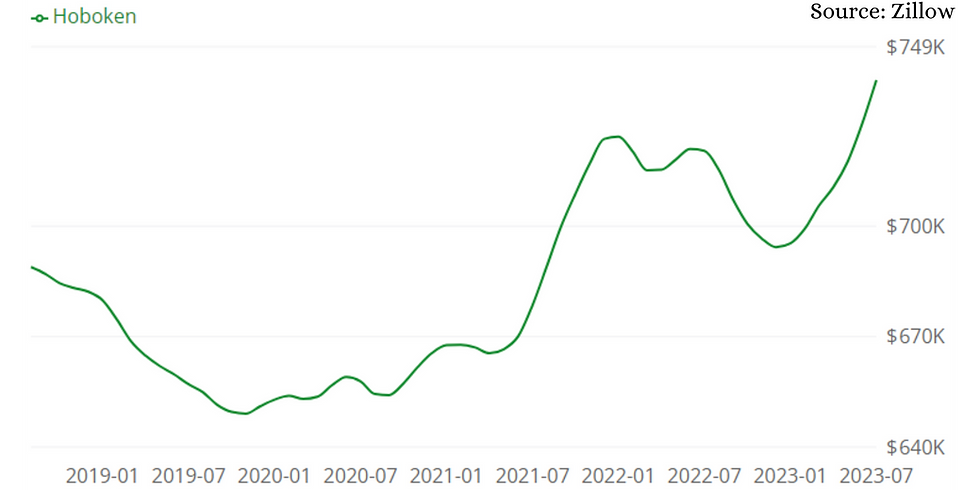The US Housing Market Crashed, But NJ Didn't
- Pavel Saikin

- Sep 7, 2023
- 4 min read
Updated: May 8, 2024
US Median home prices have just experienced the largest 6-month decline in over 75 years. The median sale price for all homes sold in the US has dropped by -13.2% during Q1-Q2 2023. For context, the 2007-2009 Great Recession experienced a 19% decline over the course of 2 years.

Not only is this the largest 6-month decline in over 75 years, it is also the 2nd largest decline in general. Only surpassed by the Great Recession. For such a historic event, there is not much coverage of this recent price action. This may be due to the vast contrast of experiences that home buyers and sellers are experiencing.
NJ Home Prices Contradict
NJ home prices are only showing strength amid the national decline. The median sale price for all homes in NJ has recently hit an all-time high, as seen on the median sale price charts below (derived from Zillow and Redfin).

The resilience of NJ home prices contradicts the national -13.2% decline, which implies that the decline is occurring in other parts of the US. Scaling out to the regional level, a unique outlier becomes notable.
Regional Outlook
The chart below shows the median sale price for each US region during Q1 2023, Q2 2023, and Q2 2022.

The Northeast region has grown dramatically over the past year while every other region in the US has fallen. It is also the only region to increase from Q1 to Q2. Each US region has a wide array of micro-markets within it that can experience different factors and conditions, but those micro-markets tend to share more similarities with each other than with other regions. This allows for an insightful interpretation of the factors that could be leading to the price variation between the Northeast and the other regions.
The Impact of New York City
Although there are thousands of factors that can influence a regional market, one factor always remains the root of it all - the supply and demand ratio. A common experience that Northeast buyers attest to, especially those in NJ and NYC, is a feeling that inventory is low. Given the immense influence that NYC has on the surrounding areas, the competitive market conditions there would have ripple effects throughout NY and NJ.
According to NYC Dept of Housing, there have been approximately 700,000 new housing units added throughout the city from 1995 to 2021.

During this same time period (1995-2021), the population of NYC has grown by approximately 1.8M people. That means there is about 1 new housing unit added for every 2.57 new residents. Across the US, and especially in cities, the average number of people per household has been decreasing, further exacerbating the shortage of supply.

There are an average of 2.51 people per household in the US. It would seem logical that adding a new housing unit for every 2.57 residents in NYC would keep pace with the average US household size, but urban living and new developments have not been geared towards modest or moderate housing, instead amplifying opulence while catering to the career-orientated individual or couple. This expansion of the luxury supply is occurring while rent control laws imposed in NYC are partially backfiring and dwindling the affordable supply. In 2019, NYC passed a rent law reform which “eliminated the 20 percent rent hike allowed when stabilized units became unoccupied. It also prevents landlords from using rent hikes to recoup more than $15,000 in apartment renovation costs over a 15-year period”. Then in 2021, NYC adopted new laws that changed the definition of what constitutes lead-based paint, halving the previously allowable levels that could be found in apartments.

Although these laws are passed with good intention, they are causing many landlords to leave their units permanently vacant. If a home falls out of lead-based paint compliance, or needs renovation and maintenance to be up to code, then it cannot be legally rented. But now the cost of renovation is not recouped in the rent increase, making this a negative investment. Can’t rent it, doesn't make sense to renovate, and nobody would buy a negative investment.
Trends in Human Ecology
Many other, broader market factors have been accumulating in NJ and NY, such as a growing concentration of high-income earners, a preference to live in easily commutable areas, and a growing desire for better public transportation. The majority of home buyers in Jersey City, Hoboken, and NYC are in the 32-56 age group.

And they aren’t just forever-renters, this age group has a high affinity for real estate, especially as an investment.

Jersey City & Hoboken
Lastly, zooming into Jersey City and Hoboken, the median prices are showing the same market resilience and strength as the broader NJ and Northeast areas. All of the prime characteristics are found in Jersey City and Hoboken by have great public transportation, an easy commute to NYC, and direct influence from NYC’s market.


Pavel Saikin
Licensed Realtor
Cell. 908-868-9552
Pavel.Saikin@Gmail.com
PavelS@CorcoranSS.com
MARKET REPORTS:
SEARCH HOMES:
A referral is the greatest compliment.
Please share my info with friends & neighbors!











Comments